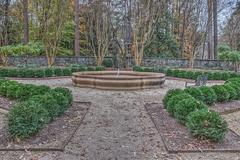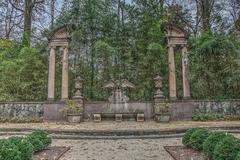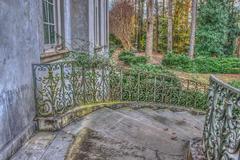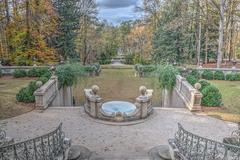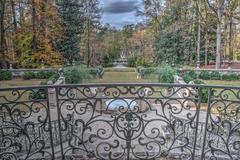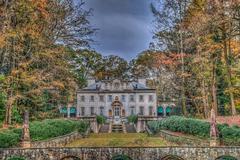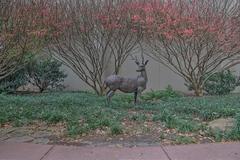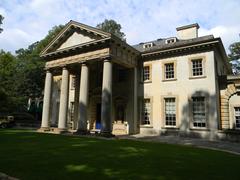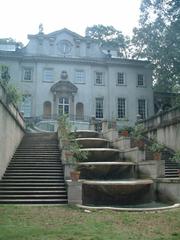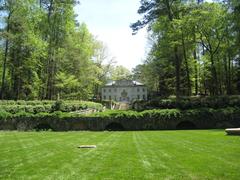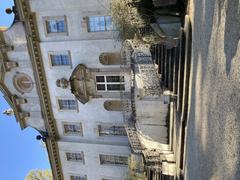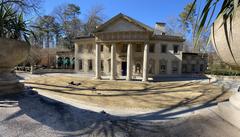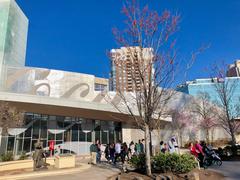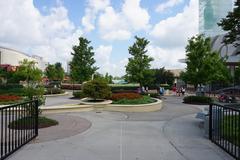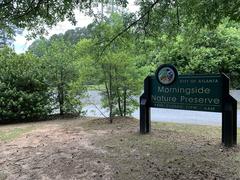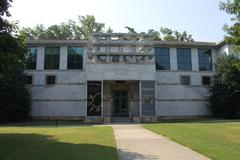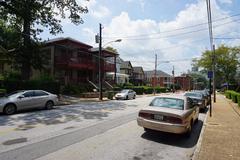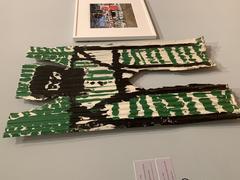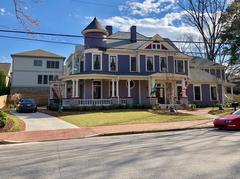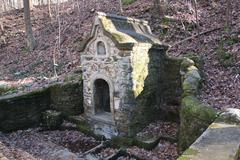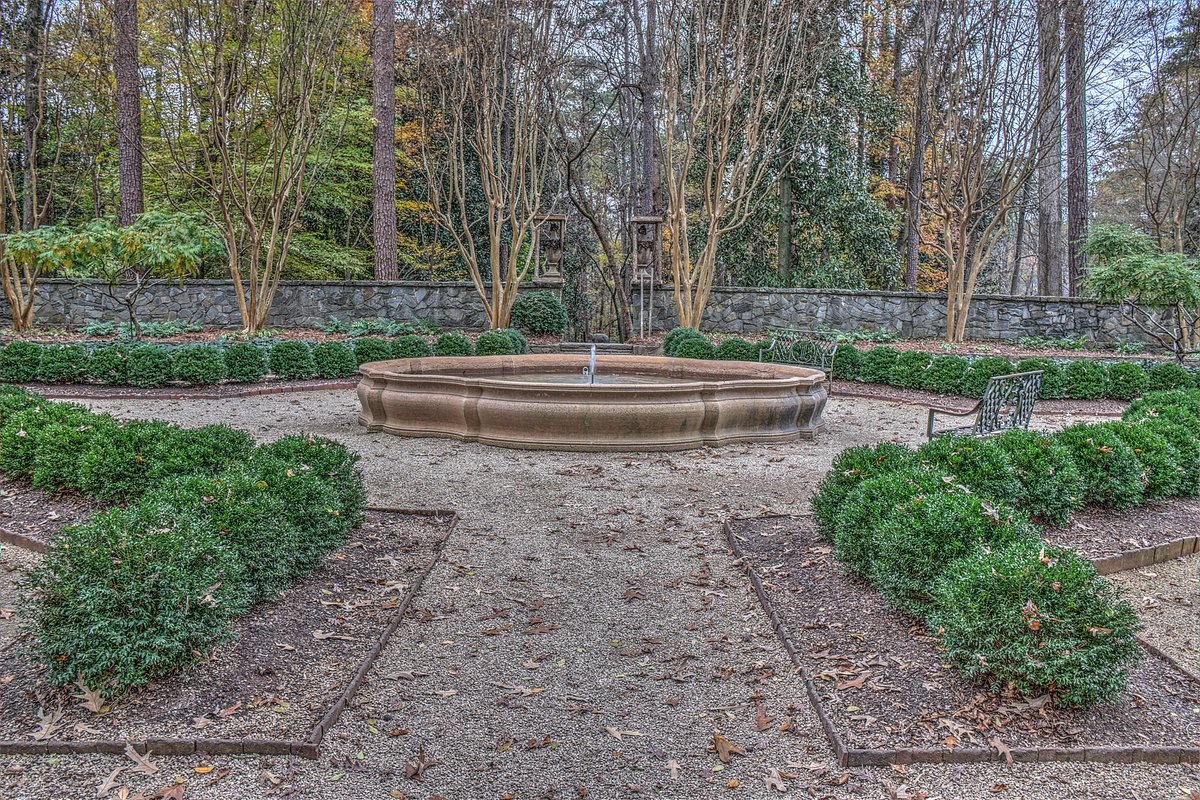
Comprehensive Guide to Visiting Quarry Garden, Atlanta, United States
Published Date: 24/07/2024
Introduction to Quarry Garden
Nestled within the expansive Goizueta Gardens at the Atlanta History Center, the Quarry Garden is a captivating blend of natural beauty, historical significance, and modern conservation efforts. Originally a granite quarry dating back to the late 19th century, it has been transformed into a lush sanctuary for native plants and wildlife, spearheaded by visionary horticulturists and conservationists like Eugene E. Cline (Atlanta History Center). Today, it stands as a testament to the power of nature and human ingenuity, offering visitors a unique opportunity to explore Georgia’s rich cultural and ecological heritage. This guide provides a comprehensive overview of the Quarry Garden’s history, transformation, key attractions, visitor information, and more, ensuring a memorable and enriching experience for all who visit.
Table of Contents
- Introduction
- Origins and Early Use
- Transformation into a Garden
- Key Contributors and Development
- Plant Selection and Conservation Efforts
- Design and Features
- Cultural and Historical Significance
- Modern Enhancements and Visitor Experience
- Educational and Recreational Opportunities
- Special Events and Programs
- Conservation and Sustainability Initiatives
- Future Plans and Developments
- Visitor Information - Hours, Tickets, and Accessibility
- Travel Tips and Nearby Attractions
- FAQ Section
- Conclusion and Call to Action
- Visuals and Media
Explore the Rich History and Transformation of the Quarry Garden at Atlanta History Center
Origins and Early Use
The Quarry Garden, located within the Goizueta Gardens at the Atlanta History Center, has a rich history dating back to the late 19th century. Originally, the site was a granite quarry, operational from around the 1880s to 1920. During this period, the quarry was a significant source of stone, contributing to the construction and development of Atlanta. However, as the city expanded, the quarry was eventually abandoned and largely forgotten, allowing nature to reclaim the area (Buckhead).
Transformation into a Garden
The transformation of the quarry into a garden began in earnest in the 1970s. The Atlanta Historical Society, now known as the Atlanta History Center, initiated the project to convert the disused quarry into a sanctuary for native plants and wildlife. This ambitious project was spearheaded by Eugene E. Cline, a renowned horticulturist, who served as the project’s lead from 1973 to 1976 (Atlanta History Center).
Key Contributors and Development
Cline collaborated with several key figures and organizations, including Florence Griffin, the Grounds Committee Chairman, botanist Norma Seiferle, and the Mimosa Garden Club. Together, they worked on establishing a streambed, waterfalls, bog garden, and various paths. They also addressed critical issues such as drainage and the redirection of the streambed to ensure the garden’s sustainability (Atlanta History Center).
Plant Selection and Conservation Efforts
One of the primary goals of the Quarry Garden project was to create a comprehensive collection of native plants from pre-settlement Georgia. Cline’s expertise was instrumental in selecting and planting a diverse array of native flora, including medicinal plants, wildflowers, shrubs, and trees. Notable species in the garden include yaupon holly, oakleaf hydrangeas, native azaleas, ferns, and the Franklin tree, which is now extinct in the wild (Atlanta History Center).
Design and Features
The Quarry Garden is designed to showcase the natural beauty and diversity of Georgia’s native plants. The garden is situated 25 feet below grade, creating a unique microclimate that supports a variety of plant species. A waterfall cascades down the high walls of the former quarry, feeding into a stream and pond below. This water feature not only adds to the garden’s aesthetic appeal but also provides a vital habitat for local wildlife (Atlanta History Center).
Cultural and Historical Significance
The Quarry Garden is more than just a botanical collection; it is a living testament to the region’s cultural and historical heritage. The towering canopy of trees shades plants that were once used for medicinal, spiritual, and practical purposes by the Creek/Muskogee people and early settlers. Visitors can immerse themselves in the world of art, music, and ceremony of the Muscogee and Cherokees, gaining a deeper understanding of the area’s pre-European settlement history (Atlanta History Center).
Modern Enhancements and Visitor Experience
In recent years, the Quarry Garden has continued to evolve, incorporating modern enhancements while preserving its historical integrity. The garden is part of the larger Goizueta Gardens, a 33-acre landscape that includes nine distinct gardens, each with its unique theme and plant collections. Visitors can explore a variety of landscapes, from curated gardens to preserved woodlands, all within the grounds of the Atlanta History Center (Atlanta History Center).
Educational and Recreational Opportunities
The Quarry Garden offers numerous educational and recreational opportunities for visitors of all ages. Informative signage throughout the garden provides insights into the history of the space, native plants, and wildlife. The Swan Woods Trail, which leads to the historic Wood Family Cabin, allows visitors to experience the natural beauty of the area while learning about its historical significance (Buckhead).
Special Events and Programs
The Atlanta History Center hosts a variety of special events and programs in the Quarry Garden and other areas of Goizueta Gardens. These events include guided tours, horticultural workshops, and cultural celebrations that highlight the garden’s unique features and historical importance. Additionally, the garden is a popular venue for private events, offering a serene and picturesque setting for weddings, corporate gatherings, and other special occasions (Atlanta History Center).
Conservation and Sustainability Initiatives
The Quarry Garden is also a model of conservation and sustainability. The Atlanta History Center has implemented several initiatives to ensure the garden’s long-term health and vitality. These initiatives include water conservation measures, habitat restoration projects, and the use of environmentally friendly gardening practices. By promoting sustainability, the Quarry Garden serves as an example of how historical sites can be preserved and enhanced for future generations (Atlanta History Center).
Future Plans and Developments
Looking ahead, the Atlanta History Center has plans to further develop and enhance the Quarry Garden. These plans include expanding the plant collections, improving accessibility, and creating new educational programs. By continuing to invest in the garden, the Atlanta History Center aims to ensure that the Quarry Garden remains a vibrant and valuable resource for the community (Atlanta History Center).
Visitor Information - Hours, Tickets, and Accessibility
- Visiting Hours: The Quarry Garden is open daily from 10 AM to 5 PM.
- Tickets: Admission is included with the general ticket to the Atlanta History Center. Adults - $21.50, Seniors (65+) - $18, Students (13+) - $18, Youth (4-12) - $9, Children (3 and under) - Free. Members enjoy free admission.
- Accessibility: The Quarry Garden is wheelchair accessible, with paved paths and ramps to facilitate easy movement.
Travel Tips and Nearby Attractions
- Nearby Attractions: After visiting the Quarry Garden, explore other attractions within the Atlanta History Center, such as the Swan House, the Smith Family Farm, and the Atlanta Cyclorama & Civil War Museum.
- Travel Tips: Wear comfortable walking shoes, bring a camera, and consider joining a guided tour for a more enriching experience.
FAQ Section
- What are the Quarry Garden visiting hours? The garden is open daily from 10 AM to 5 PM.
- How much are the tickets for the Quarry Garden? Admission is included with the general ticket to the Atlanta History Center, with prices ranging from $9 to $21.50.
- Is the Quarry Garden wheelchair accessible? Yes, the garden has paved paths and ramps for easy accessibility.
- Are guided tours available? Yes, guided tours are available and highly recommended for a deeper understanding of the garden’s history and plant collections.
Conclusion and Call to Action
The Quarry Garden at the Atlanta History Center is a unique blend of natural beauty, historical significance, and modern conservation efforts. Plan your visit today to explore this remarkable garden and immerse yourself in Georgia’s rich cultural and natural heritage. For more information and updates, follow the Atlanta History Center on social media and visit their official website.
Visuals and Media
 The Quarry Garden at the Atlanta History Center
The Quarry Garden at the Atlanta History Center
 Waterfall within the Quarry Garden
Waterfall within the Quarry Garden
(Images courtesy of the Atlanta History Center)
References and Further Reading
- Atlanta History Center. (n.d.). Goizueta Gardens. https://www.atlantahistorycenter.com/buildings-and-grounds/goizueta-gardens/
- Atlanta History Center. (n.d.). Eugene E. Cline: Georgia horticulturist, plant collector, conservationist. https://www.atlantahistorycenter.com/blog/eugene-e-cline-georgia-horticulturist-plant-collector-conservationist/
- Buckhead. (n.d.). Goizueta Gardens at Atlanta History Center. https://www.buckhead.com/parks/goizueta-gardens-atlanta-history-center/
- Access Atlanta. (n.d.). Your guide to the Atlanta History Center: Current and permanent exhibitions. https://www.accessatlanta.com/atlanta-things-to-do/your-guide-to-the-atlanta-history-center-current-and-permanent-exhibitions/QLAJ6PXMWVBH7ONIEJW4J6L6HI/
